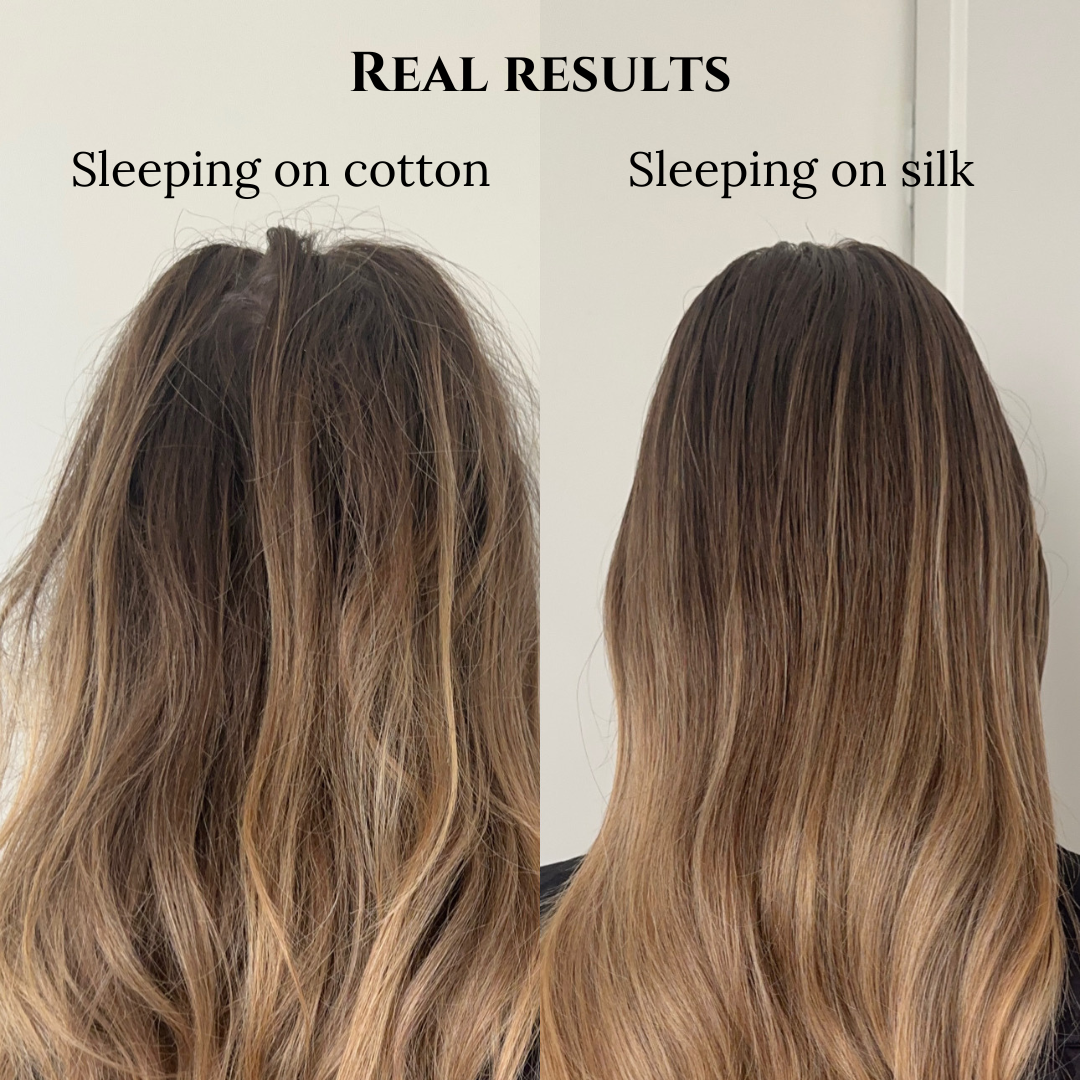
Why do dermatologists choose pure silk fabric over satin? Proven in clinical studies to:
✨Reduce frizz and hair breakage
✨ Prevent wrinkles
✨ Hypoallergenic
Best Sellers
AS SEEN IN
Silk vs Other Fabrics
- Hypoallergenic and gentle on skin.
- Reduces friction and damage to hair and skin.
- Natural temperature regulating properties.
- Keeps hair and skin moisturised.
- Safer and healthier option for hair and skin.
FAQ
What is the difference between satin and silk?
Satin is a type of fabric made from different materials like polyester, or nylon. Silk, on the other hand, is a natural fiber that comes from silkworms. While silk can be used to make satin fabric, not all satin is made of silk. Silk has its own special qualities, like a natural shine, breathability, and being good for sensitive skin, which may not be the same for other satin fabrics.
Is silk good to tame frizzy hair?
Yes, silk is known for its hair-friendly properties, including its ability to tame frizzy hair. Silk has a smooth surface that causes less friction and helps to minimize hair breakage, tangles, and static. When using a silk pillowcase or wrapping hair in a silk scarf or bonnet, it can reduce the friction between the hair strands and the fabric, leading to smoother, less frizzy hair in the morning. Silk also helps to retain the hair's natural moisture and prevent excessive drying, contributing to healthier-looking hair.
Is silk good for oily skin?
Unlike certain synthetic fabrics, silk is a natural fiber that is known for its breathable properties. It allows air circulation and helps to wick away excess moisture from the skin, which can be particularly helpful for individuals with oily skin. Additionally, silk is hypoallergenic and less likely to irritate or clog the pores, reducing the risk of breakouts.
Why is silk more expensive than satin?
Silk is more expensive than satin due to several factors. Firstly, silk is a natural fiber produced by silkworms, requiring a labor-intensive and time-consuming process. The silk production involves carefully harvesting silk threads from silkworm cocoons, which are then spun into yarns. This process is intricate and requires expertise. In contrast, satin can be made from various synthetic or blended fibers, which are often less costly to produce.













